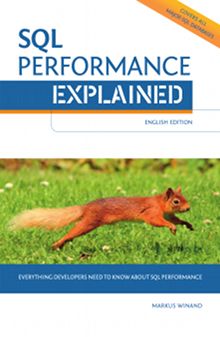Let’s get that straight from the beginning: select without from is not standard conforming SQL. Full stop.
Nevertheless it works in many databases—also in standard conforming ones. That’s no contradiction: the standard explicitly allows conforming databases to “provide user options to process non-conforming SQL statements”.0 The behavior of such statements is completely up to the vendor, of course.
So what alternative does the standard offer to select without from? A surprisingly simple and yet powerful one: values without insert.
The following select statement can thus be implemented as a standard-conforming values without insert:
Instead of a non-conforming select without from:
SELECT CURRENT_DATEthe standard allows the use of values without insert:
VALUES (CURRENT_DATE)Too bad the stand-alone use of values is still not part of Core SQL. Consequently, only three out of the six tested databases support it. select without from, on the other hand, works on four of them.
By now you might wonder why stand-alone values might be useful at all. As I implied above, it is more powerful than select without from because it is not limited to produce a single row.
The following values statement returns today’s and yesterday’s dates (use-case) in two rows—not two columns:
VALUES (CURRENT_DATE)
, (CURRENT_DATE - INTERVAL '1' DAY)With select without from, you’d need to use union. That can quickly become bulky.
Conforming Alternatives
SQL Server offers a confirming variant: values is allowed in the from clause, if the from clause assigns column names:
SELECT *
FROM (VALUES (1,2)
, (3,4)
) t1 (c1, c2)The only other standard-conforming alternative is to use a dummy table in the from clause. Databases that do not allow select without from usually ship with tables for this purpose (e.g., DUAL in the Oracle database or SYSIBM.DUMMY1 in DB2). Besides portability there is nothing against using them.
The easiest way to build a standard-conforming and portable solution it is to ship your own dummy1 table with your software.
If you don’t mind maintaining different create statements for each target database, you can also use a view2 based on the vendors proprietary dummy table. That may or may not save you from an argument about performance if the vendors dummy table is super-performance-optimized.
Compatibility
On the bottom line, this topic is an embarrassing demonstration how poorly the standard is adopted. However, it is upon us to demand this SQL-92 feature from the database vendors.
- Proprietary extension (non-standard!)
- Only without keyword
row - Requires keyword
row:values row('r1c1','r1c2'), row('r2c1', 'r2c2') - Needs
fromclause column renaming • Only without keywordrow - Requires column names in
withclause • Only without keywordrow

